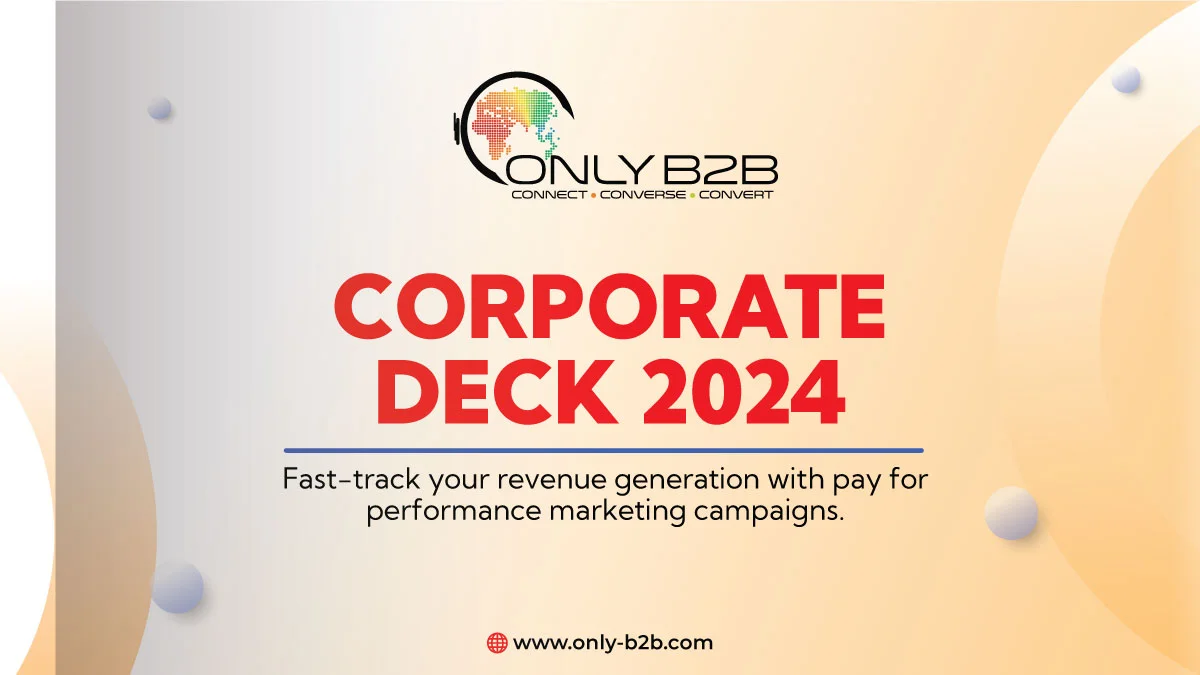
In the fast-paced world of digital marketing, staying ahead of the curve is not just a goal; it’s a necessity. The landscape of the lead generation and its methods is undergoing a significant transformation. According to recent studies, 85% of B2B marketers believe that improving the quality of leads is a top priority.
This shift in focus has made optimizing your inbound lead qualification process, including the valuable aspect of inbound lead qualification service, more critical than ever before. Let’s embark on a journey to understand the ins and outs of this vital strategy, exploring its benefits, key components, practical implementation, and how to measure its success. Whether you’re considering in-house efforts or exploring an inbound lead qualification service, the following guide will provide insights to elevate your approach.
Must Read: Revolutionizing Lead Generation with Automated Lead Qualification: A Data-Driven Guide
How to Qualify Inbound Leads: 2024 B2B Guide
Table of Contents
- 1 How to Qualify Inbound Leads: 2024 B2B Guide

Understanding Inbound Lead Qualification
Before we dive into the optimization process, let’s grasp the fundamentals of inbound lead qualification. At its core, inbound lead qualification is the art of identifying and categorizing leads based on their potential to become paying customers. In essence, it’s about sifting through the haystack to find the golden needles.
To put things in perspective, consider this: 68% of B2B organizations struggle with lead generation, and a significant part of this challenge lies in determining which leads are genuinely worth pursuing.
You see, not all leads are created equal. Some may be ready to make a purchase, while others are merely exploring options.
Without a robust qualification process, your sales team might be wasting valuable time and resources chasing leads that aren’t likely to convert.
Must Read: Mastering BANT Qualification for Sales Success
Benefits of Optimizing Inbound Lead Qualification
Now that we understand what inbound lead qualification entails, let’s explore why optimizing this process is worth your investment.
Enhanced Efficiency:
An optimized lead qualification process ensures that your sales team is focusing its efforts on leads with the highest potential. This, in turn, boosts efficiency and productivity.
Research indicates that organizations using lead scoring experience a 77% increase in lead generation ROI.
Improved Conversion Rates:
When your team prioritizes qualified leads, you’re more likely to see them convert into paying customers. In fact, businesses that nurture leads effectively experience a 20% increase in sales opportunities.
Resource Optimization:
By directing your resources towards leads that matter, you can allocate your marketing budget more effectively. This includes not only your budget but also your team’s precious time. An unoptimized qualification process can lead to wasted resources.
Key Components of Optimized Inbound Lead Qualification
To effectively optimize your inbound lead qualification process, you need to consider several key components:
Lead Scoring:
Implement a lead scoring system that assigns values to various lead attributes and behaviors. For instance, a lead who engages in a product demo might have a higher score than one who merely visits your website.
Must Read: Lead Scoring Strategies That Boost Conversion Rates: The Road to Sales Success
Automated Workflows:
Embrace marketing automation tools to streamline the qualification process. These tools can handle routine tasks, allowing your team to focus on more complex aspects of lead qualification.
Alignment with Sales Teams:
Collaboration between your marketing and sales teams is paramount. Establish clear criteria for what constitutes a qualified lead to ensure that both teams are on the same page.
Continuous Analysis:
Regularly analyze your lead data to identify patterns and trends. This ongoing analysis allows you to refine your qualification criteria over time, ensuring it remains effective.
Must Read: Sales Success Secrets: The Critical Role of Lead Generation and Appointment Setting
How to Optimize Your Inbound Lead Qualification Process
Now, let’s get practical. How can you go about optimizing your inbound lead qualification process for 2024? Here’s a step-by-step guide:
Define Ideal Customer Profiles (ICPs):
Start by creating detailed ICPs that outline the characteristics and behaviors of your most valuable customers. Use these profiles as benchmarks for qualifying leads.
Implement Lead Scoring:
Develop a lead scoring system that assigns values to various lead attributes and behaviors. Ensure that your scoring is dynamic and evolves as you collect more data.
Leverage Automation:
Invest in marketing automation tools that can assist with lead qualification. These tools can track lead interactions and apply scoring rules automatically.
Segment Your Leads:
Divide your leads into different segments based on their behavior and characteristics. Tailor your marketing messages and content to each segment for more personalized engagement.
Establish a Feedback Loop:
Maintain an open channel of communication between your marketing and sales teams. Regularly review and refine your qualification criteria based on feedback from the sales team.
Must Read: A Beginner’s Guide to Generating Business Leads
Measuring Success
In the world of inbound lead qualification, metrics serve as your guiding light. To measure your success, consider the following metrics:
Conversion Rate:
Track how many of your qualified leads actually convert into customers. This conversion rate is a direct reflection of the effectiveness of your qualification process.
Lead Velocity:
Monitor the rate at which new leads enter your pipeline. A steady flow of qualified leads (Marketing qualified or Sales qualified) indicates a well-optimized process.
Sales Cycle Length:
Measure how long it takes for a lead to move through the entire sales cycle. A shorter sales cycle can signify more efficient lead qualification.
Lead-to-Customer Ratio:
Determine the percentage of leads that eventually become paying customers. A higher ratio indicates a more successful lead qualification process.
Conclusion
Inbound lead qualification is not just a process; it’s a strategic approach to maximizing the value of your leads. As you navigate the marketing landscape of 2024, remember that success begins with the effective qualification of inbound leads.
To stay competitive and relevant in your industry, embrace this practice as an inbound lead qualification service. By doing so, you’ll unlock the true potential of your leads, converting them into loyal customers.
In this digital age, data-driven strategies, like qualifying inbound leads, are the keys to sustained success. So, as you embark on your journey into 2024, make optimizing your inbound lead qualification process a top priority. Your customers are out there; it’s time to find and nurture them effectively.

Vikas Bhatt is the Co-Founder of ONLY B2B, a premium B2B lead generation company that specializes in helping businesses achieve their growth objectives through targeted marketing & sales campaigns. With 10+ years of experience in the industry, Vikas has a deep understanding of the challenges faced by businesses today and has developed a unique approach to lead generation that has helped clients across a range of industries around the globe. As a thought leader in the B2B marketing community, ONLY B2B specializes in demand generation, content syndication, database services and more.


